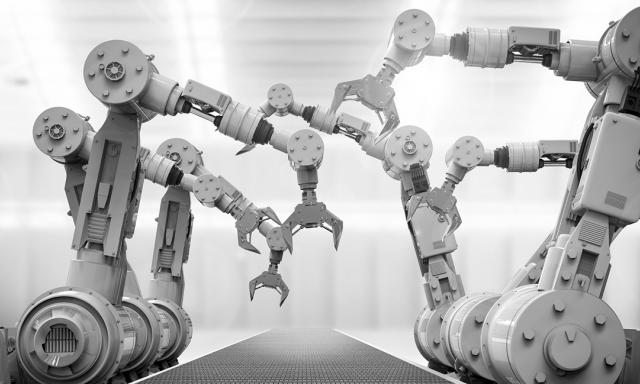

 Article
Article

 You do not need to be a rocket scientist to figure out that the pace of business change continues to accelerate and that technology is a big driver. Well, buckle your seat belts, because on the horizon are cost-effective robots and smart machines powered by artificial intelligence.
You do not need to be a rocket scientist to figure out that the pace of business change continues to accelerate and that technology is a big driver. Well, buckle your seat belts, because on the horizon are cost-effective robots and smart machines powered by artificial intelligence.

Insights from
You do not need to be a rocket scientist to figure out that the pace of business change continues to accelerate and that technology is a big driver. Well, buckle your seat belts, because on the horizon are cost-effective robots and smart machines powered by artificial intelligence. Technology advancements will make achieving scale and efficiency easier — leaving innovation as a key competitive differentiator.
Professor Jeanne Liedtka and I have been engaged for years in looking at how individuals and organizations become consistent high-value-add innovators. Professor Liedtka’s research in individual mindsets and design thinking has led the way from an individual perspective. My work has focused on the organizational aspects of innovation: how to create an internal environment that enables and drives innovation behaviors and innovation experimentation.
We combined our work in a short book, The Physics of Business Growth: Mindsets, System & Processes, which was published by Stanford University Press. In the book, we present a blueprint for building a high-performance innovation machine. Doing so requires the right mindsets, the right internal environment (system) and the right processes.
Innovation requires individuals who are open-minded and comfortable dealing with uncertainty and ambiguity. These individuals love to explore and learn and are not obsessed with avoiding failure. They view innovation failures as learning opportunities.
Innovation also demands an empowering work environment — an internal innovation system. To facilitate increased innovation, one needs to enable and drive innovative behaviors by aligning culture, structure, leadership behaviors, measurements and rewards.
Innovation entails using the right processes that promote exploration, discovery and fast, cheap experimentation.
Although this sounds easy, obviously, it is not. Why? There are many reasons, but let’s focus on a big one. Operational efficiency is a necessary business capability in today’s environment, but it drives a mindset and behaviors that make innovation difficult. How? Operational efficiency’s goal is 99 percent defect-free performance. Managing operational efficiency means looking for and stamping out variance.
To no one’s surprise, innovation is not efficient. Innovation usually results from iterative experimental learning. Innovation variance can run as high as 90 percent. If you are an innovator, you love variance because it can lead to new avenues of value creation. Innovation variance produces surprises — unexpected results that can lead to new WOWs — insights. If you are managing operations, variance is your enemy. If you are managing innovation, variance can be your best friend.
The cultural part is key. The fundamental process underlying both 99 percent defect-free operational excellence and innovation is learning. Operational excellence comes from constant improvement, which requires learning. Innovation results from the learning derived from iterative experiments. While different processes are required and different tolerances for failure are necessary, fundamentally, companies that are great at both innovation and execution are great learning companies with lots of great learners.
Hess is a top authority on organizational and human high performance. His studies focus on growth, innovation and learning cultures, systems and processes, and servant leadership.
Hess has authored 13 books, including The Physics of Business Growth: Mindsets, System and Processes, co-authored by Darden Professor Jeanne Liedtka; Grow to Greatness: Smart Growth for Entrepreneurial Businesses; Learn or Die: Using Science to Build a Leading-Edge Learning Organization and Humility Is the New Smart: Rethinking Human Excellence in the Smart Machine Age (January 2017), co-authored by Katherine Ludwig. His newest book is Hyper-Learning: How to Adapt at the Speed of Change (September, 2020). He has written more than 160 practitioner articles and 60 Darden cases, and his work has appeared in more than 400 global media publications.
B.S., University of Florida; J.D., University of Virginia; LLM, New York University